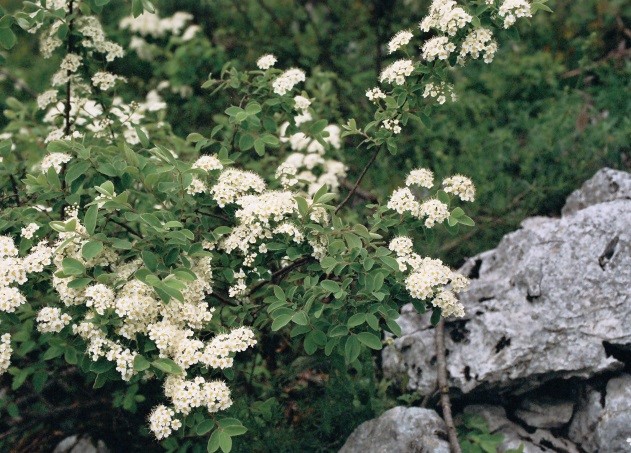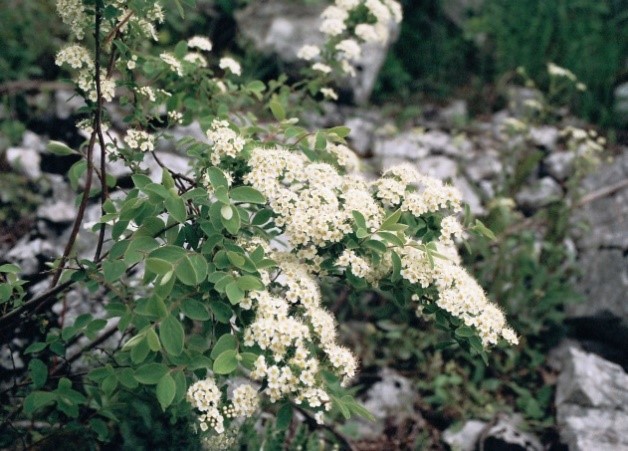
The rocks and rocky sun-kissed slopes of the Lower Lakes and Korana River canyon, as well as some other sites in the Park, are covered with this rare and interesting plant from the rose family (Rosaceae) – a deciduous shrub of a height of up to 2 metres. It is especially noticeable in May when the numerous blossoms blooming in clusters, comprised of little white flowers, softly embrace the rocky slopes.
The name spiraea comes from the Greek word speira = spiral, twist (some species have spiral or twisted stems), and the word cana comes from the Latin word canus = greyish-white (underside of leaves of a greyish-white colour), while the topside is hairy and darker.
Due to its appearance, in Croatian it is known as sivkasta suručica or suručica sieda, describing it as greyish.
It was one of the first plant species described in Descriptiones et icones plantarum rariorum Hungariae (Descriptions and pictures of rare plants of Hungary) as growing in the area of the Plitvice Lakes. Unlike the previously described endemic Cardamine (1805), it is mentioned somewhat later in Volume III published in 1812.
It is mentioned together with the previously described Cardamine chelidonia in the booklet considered as the first scientific description of the Plitvice Lakes (Ludwig V. Farkas Vukotinović, 1859: Die Plitvica-Seen In Der Oberen Militargrenze In Kroatien).
Read other interesting stories from the Plitvice Lakes National Park







